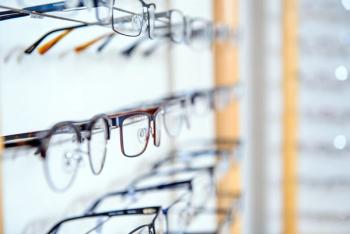
Become the new dry eye clinic: Improve patient care, revenue
Treating both the medical and vision complaints of existing patients, in separate visits, is a low-cost strategy that generates significant additional income and meets patients' needs for comprehensive eye care.
Key Points
"If you do this correctly, treating dry eyes can be a very, very profitable part of your practice and can make the difference between thriving and surviving in a bad economy," Dr. Morris said.
Devoting more attention to the care of patients with dry eye is an alternative to trying to grow the optical side of the business. The latter is probably a risky option right now, since many consumers are cutting back on discretionary spending. This reduction may include putting off a new pair of glasses, especially if the purchase would have been more for cosmetic purposes than purely vision-related, Dr. Morris suggested.
"Since approximately 20% of the population has dry eyes, and 15% has lid margin disease, and given that optometry can see 60% of all eye exams, this is a market that we should own," Dr. Morris said. "This demographic is already in our office. The question is, are we acknowledging their symptoms, looking for their clinical signs, and then treating them appropriately."
Getting ready
Deciding to implement a dry eye clinic within an established practice is not a spur-of-the-moment decision, and taking a series of preparatory steps is necessary, according to Dr. Morris. The first is to start regularly using a symptom questionnaire, which when completed will be helpful to both the staff and patient. For the clinician, the survey results will suggest a diagnosis that guides the treatment approach, the schedule of future appointments, and billing and coding.
For patients, the results may at last put a name on the various symptoms they've experienced. Many people are unaware that symptoms such as itching, irritation, or vision fluctuation during the day are associated with a recognized medical condition. But once they do, they nearly always are interested in treatment to relieve their symptoms, which will mean follow-up consultations, he said.
The importance of staff 'buy-in'
Dr. Morris also noted that the entire office staff needs to be on board with the idea of a dry eye clinic, starting with a brief educational session on the causes, signs and symptoms, and treatment options for dry eye disease.
After the program is implemented, front desk employees can be responsible for handing out the questionnaire, and a technician or nurse can go over the questionnaire with the patient in the exam room. By the time the doctor sees the patient, both are prepared to discuss whether the day's visit should be devoted to medical treatment of the dry eye or to vision conditions and, once that decision has been made, to also arrange treatment for the problem that was not chosen for immediate attention.
One of the most crucial phrases the optometrist must use is "we need to see you back," but too few have been comfortable saying that to their patients, Dr. Morris said.
"Too many of our peers give their services away by treating the medical condition as if it were part of the vision exam," he added, yet distinguishing between the vision and medical issues and treating them separately is the foundation for success in the medical model.
A thriving dry eye clinic also requires that physicians be consistent with their message and able to educate patients about their ocular surface disease, the treatment, and the expected outcomes.
Patients need to understand that dry eye is a chronic condition similar to diabetes or hypertension and that periodic visits will be needed to monitor and adjust therapy. Patient handouts-such as brochures, fact sheets, or DVDs-are helpful. These materials can be obtained from pharmaceutical companies and other sources.
Marketing the dry eye practice also is essential. This can be done on the practice Web site, through newsletters, and on the office's recorded introductory or "hold" messages.
The financial aspects of offering additional services cannot be neglected either, Dr. Morris added. The physician and staff have to know and use the appropriate diagnostic codes at the appropriate level of care.
Newsletter
Want more insights like this? Subscribe to Optometry Times and get clinical pearls and practice tips delivered straight to your inbox.


















































.png)


